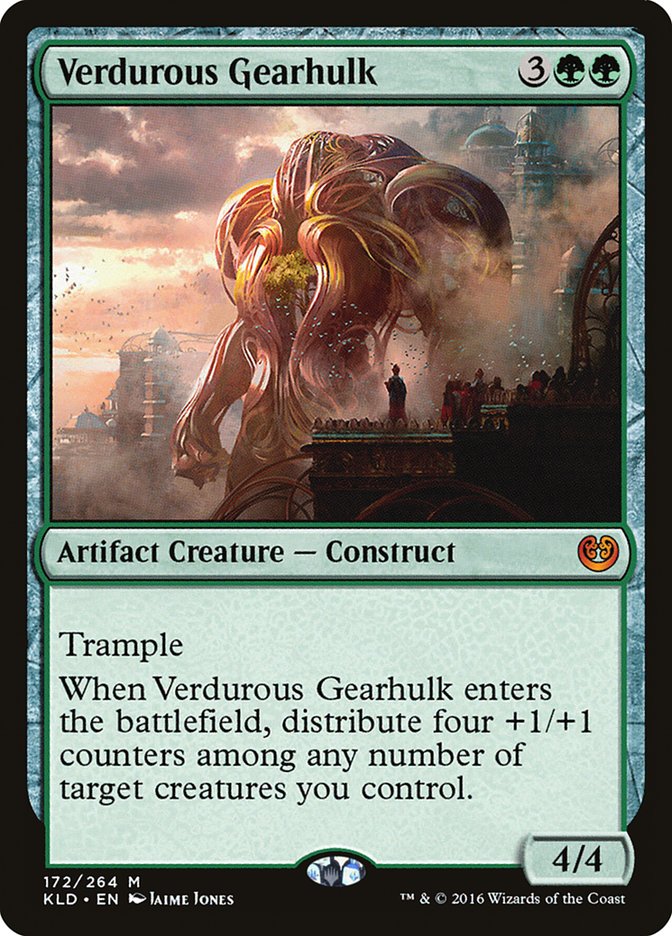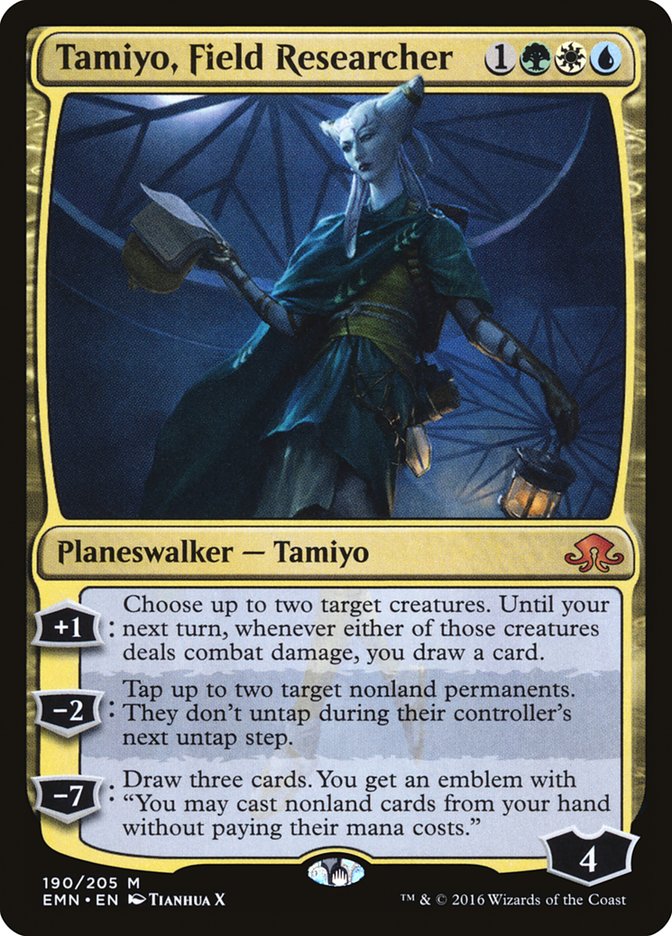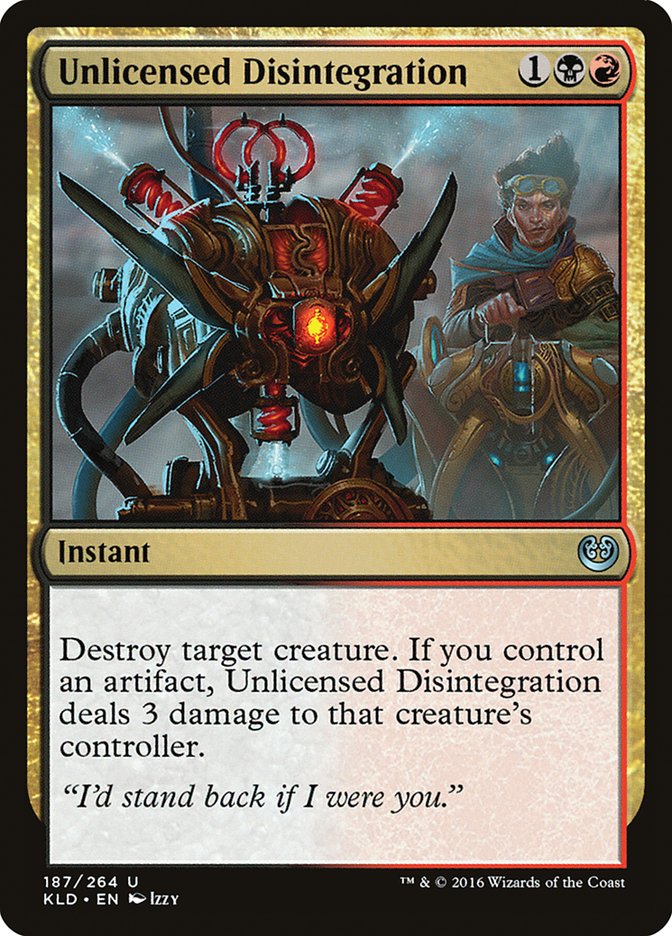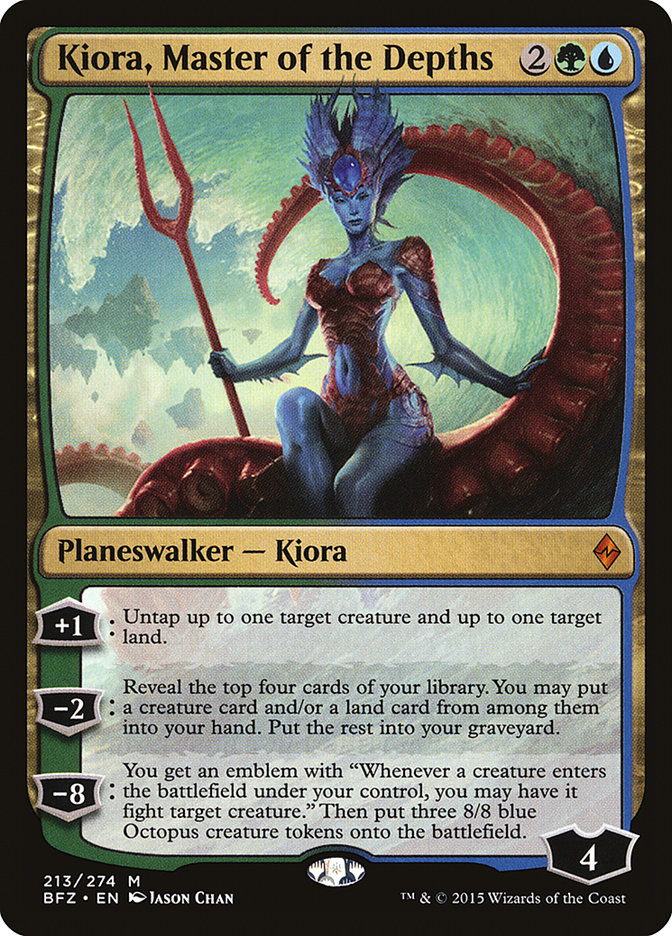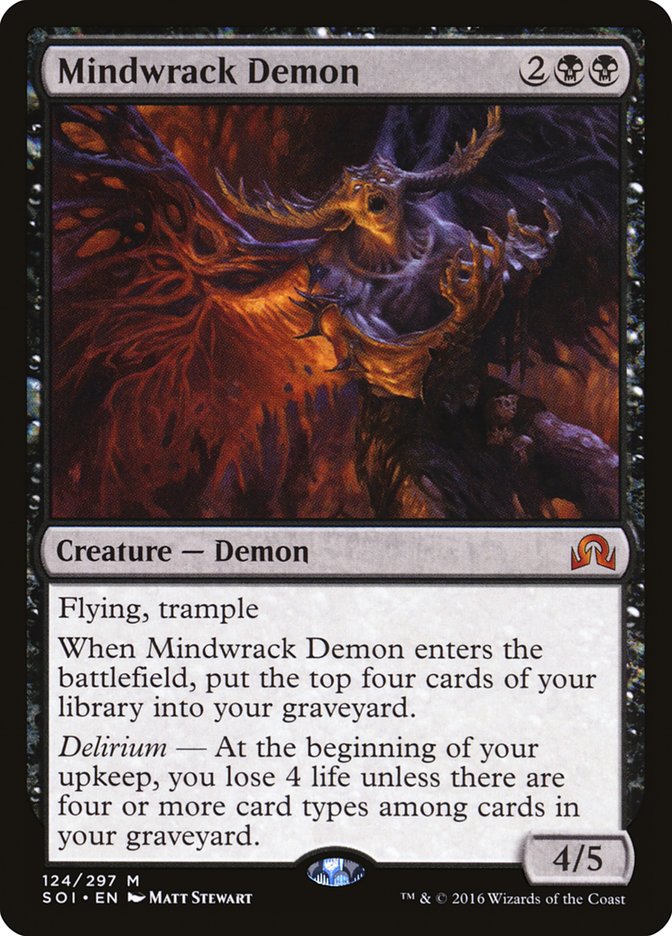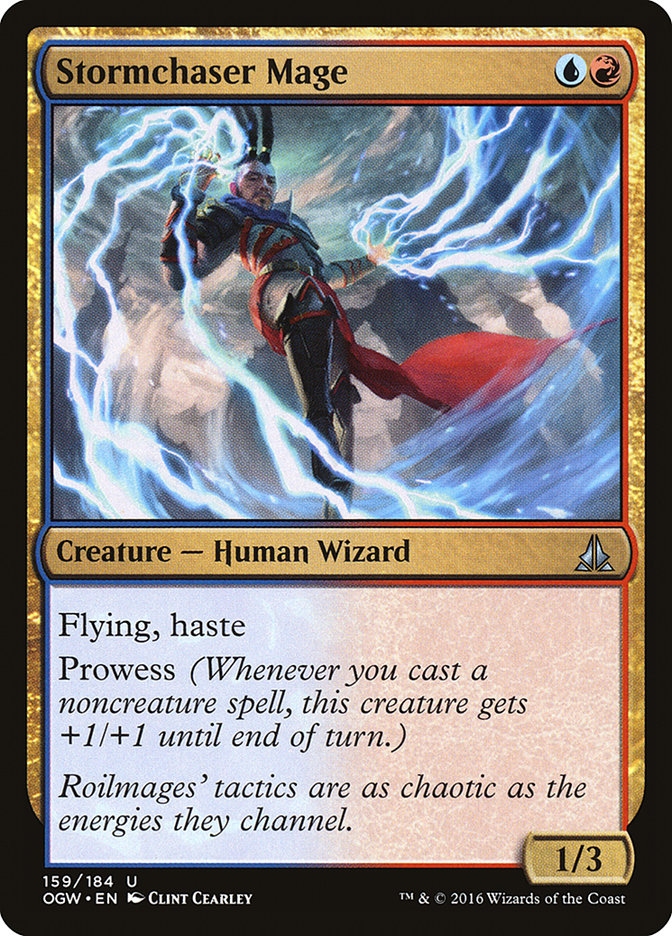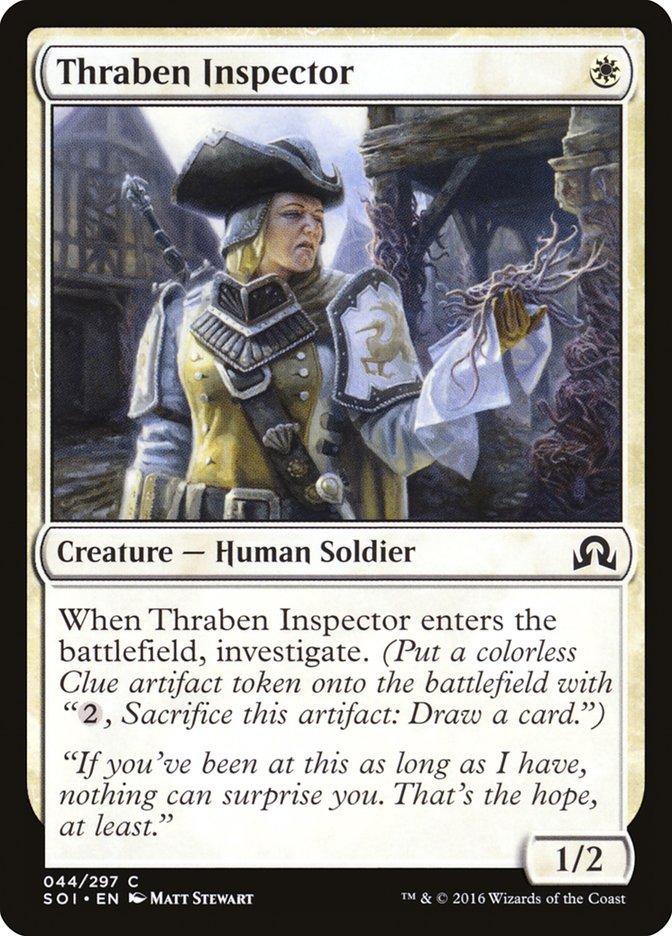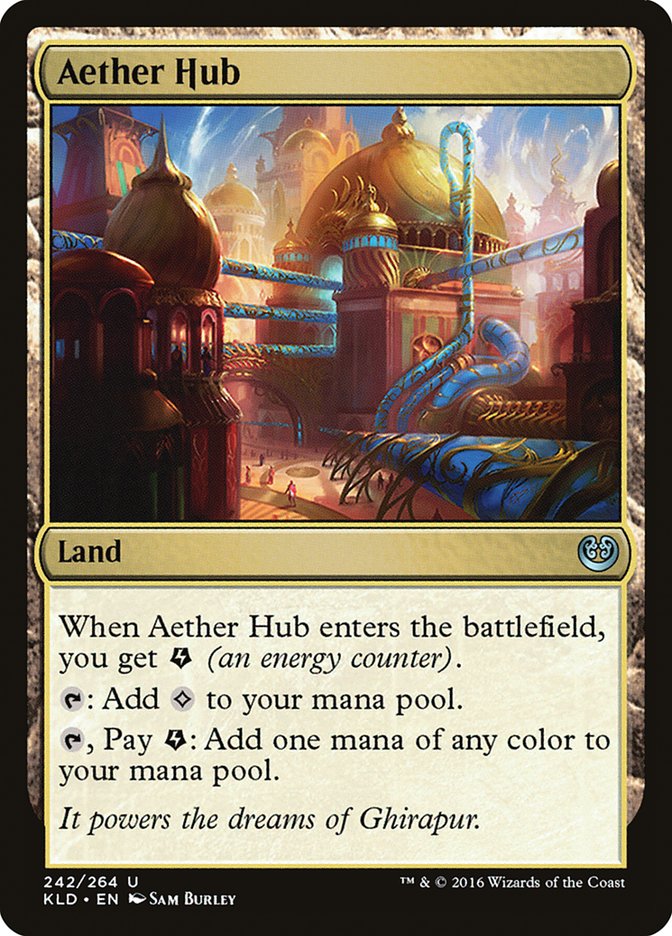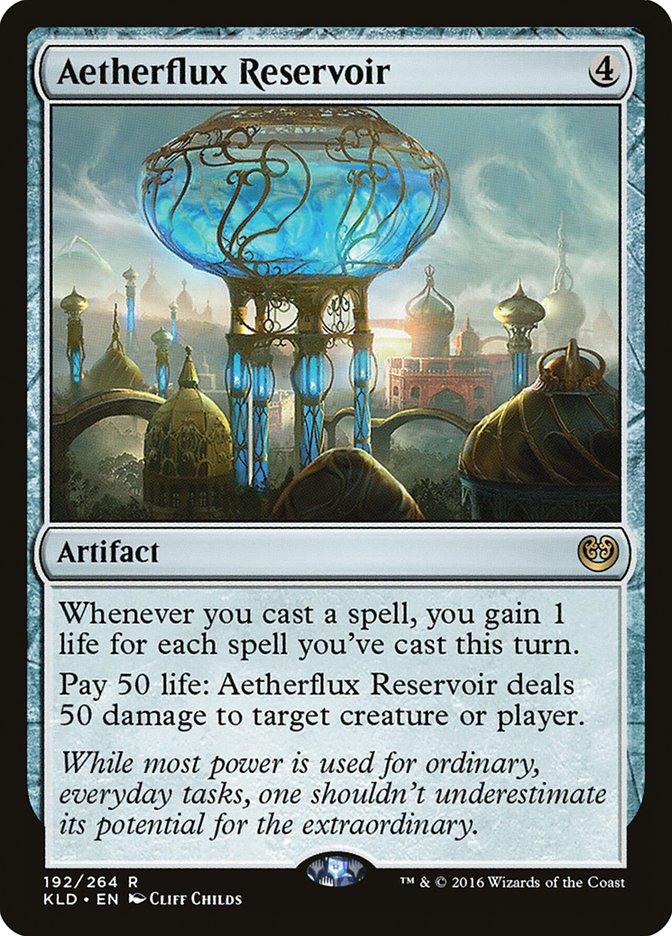I’ve written a lot about the cool new brews that Kaladesh Standard has to offer, but more often than not, that isn’t what Week 1 is about. Rather, taking proven proactive strategies and applying powerful new cards or small tweaks on old favorites is what the majority will gravitate to, and for good reason.
As a result, this week I’m going to showcase my take on (or what I believe to be good in) the decks I think will show up this weekend at #SCGINDY to unveil the new Standard format.
We’ll also close with some general thoughts on the format and some things to keep in mind for what your deck needs to be capable of competing with in a broad-stroke sense.
Why not begin with the dreaded Bant?
Creatures (25)
- 4 Reflector Mage
- 4 Sylvan Advocate
- 4 Tireless Tracker
- 4 Spell Queller
- 1 Selfless Spirit
- 4 Verdurous Gearhulk
- 4 Servant of the Conduit
Planeswalkers (4)
Lands (26)
Spells (5)

Verdurous Gearhulk is going to be a major contender, particularly early on in the format’s life cycle when the nonlinear decks haven’t been as fleshed out. This take on “Bant Company” is fairly straightforward, mostly maximizing the efficient creatures that are available in the color suite and topping off with the full four copies of Tamiyo, Field Researcher, previously neglected due to the tight squeeze on curve that was necessary to support Collected Company.
I do want to specifically highlight my featured manabase, as it is distinct from the “stock version.” I’m not sure which is technically correct, but with the colors being the following:
Blue: 17
White: 16
Green: 17
…against the normalized…
2 Island
5 Forest
2 Plains
…giving the following sources:
Green: 18
White: 17
Blue: 12
…it would appear that Aether Hub and Botanical Sanctum are the correct route, not only for the landslide improvement in blue sources but also for a higher density of untapped mana early in the game versus later. The larger trade-off is that I don’t believe it to be reasonable to support Lumbering Falls here, but the card is also worse when Collected Company isn’t available to chain into Sylvan Advocates and clear the way for more aggression with Reflector Mage.
It’s similarly worth noting that this a far more blue-centric deck, even if it might not appear to be at first glance. Playing Reflector Mage or Spell Queller and having the ability to leave up Essence Flux is a big deal. I am also interested in playing an Elder Deep-Fiend– and countermagic-based sideboard, which demand early blue mana to function properly.
I’m not claiming that the manabase is perfect, of course, but I think it’s a step in the right direction and will be the first of many times in this article that I feature Aether Hub alongside Servant of the Conduit, a powerful new pair that are likely to define Standard.
Creatures (20)
- 2 Reckless Bushwhacker
- 2 Lupine Prototype
- 4 Pia Nalaar
- 4 Bomat Courier
- 4 Scrapheap Scrounger
- 4 Inventor's Apprentice
Lands (22)
Spells (18)

With Boss Humans losing a variety of their redundant early creatures, red is going to back in the spotlight with the new toys they’ve picked up in Kaladesh. I’ve played against Gerry Thompson with a variety of different decks and his deck is very good. Not only do the new red aggressive decks have a plethora of good early plays, but they back it up with hard removal, effective reach, and general resiliency.
Smuggler’s Copter and Unlicensed Disintegration are really the key cards here. The former is difficult to interact with while providing a healthy amount of damage and card selection (or enabling for Fiery Temper), and the latter is the rarely-seen hard removal for an aggressive red deck that also serves as a significant burn spell. Searing Murder is definitely not a joke.
I would take a look at Gerry’s thought process and the general evolution of the deck here
Cards that I would hone in on are:
Here’s my latest update of Temur Emerge:
Creatures (22)
- 2 Pilgrim's Eye
- 2 Emrakul, the Promised End
- 3 Wretched Gryff
- 2 Elder Deep-Fiend
- 2 Ishkanah, Grafwidow
- 4 Primal Druid
- 3 Filigree Familiar
- 4 Servant of the Conduit
Planeswalkers (2)
Lands (22)
Spells (14)

This list might appear a bit weird, especially since we’re largely a hybrid of “Turbo Emrakul” and traditional Emerge. In particular, my movement towards Kiora, Master of the Depths over maximizing Vessel of Nascency is odd and perhaps simply wrong. That said, I do think it is imperative to get on the battlefield quickly right now, which explains my maximizing of Servant of the Conduit.
Once we are playing mana creatures, then it makes sense to have Kiora be “Vessels three and four,” which also diversifies a bit more for Delirium and reducing the cost of Emrakul, the Promised End.
I do wish that we could get further away from so many Wretched Gryffs, but just as Bant Company was the “speed test” last format, Smuggler’s Copter is a formidable opponent that we must acknowledge.
My sideboard is mostly about not getting annihilated by Ceremonious Rejection, and I don’t feel as comfortably positioned as I was at the end of last season with my “heavily diverse ramp into Ulamog, the Ceaseless Hunger” strategy. Despite this, Nissa, Vital Force is a punishing card against anyone getting reactive against us and Tireless Tracker is significantly better when paired with a mana creature.
Creatures (13)
- 1 Kalitas, Traitor of Ghet
- 4 Sylvan Advocate
- 4 Tireless Tracker
- 1 Emrakul, the Promised End
- 2 Ishkanah, Grafwidow
- 1 Noxious Gearhulk
Planeswalkers (4)
Lands (24)
Spells (19)

G/B Delirium hasn’t gotten too many new toys, but it is still a super-solid deck. I don’t get the impression that Languish will be missed much with the way the format is shaping up, and Grasp of Darkness is a premium removal spell against Smuggler’s Copter and other Vehicles.
This deck can play fairly aggressively when it wants to while also grinding extremely well.
Here’s a more exciting version that others might be more interested in picking up:
Creatures (17)
- 3 Pilgrim's Eye
- 2 Mindwrack Demon
- 1 Emrakul, the Promised End
- 3 Distended Mindbender
- 2 Ishkanah, Grafwidow
- 2 Filigree Familiar
- 4 Servant of the Conduit
Planeswalkers (3)
Lands (23)
Spells (17)

Servant of the Conduit facilitates our splash more easily, even if it is itself vulnerable to Kozilek’s Return. The ability to power out Distended Mindbender on turn 4 just from a mana creature is certainly an appreciated aspect of this deck, however.
Similarly, Mindwrack Demon is another card that has improved – it is difficult to remove, there are fewer Reflector Mages ruining its plans, and it contends nicely with Smuggler’s Copter.
There is no correct answer regarding which Delirium deck is better; both are reasonable at playing their respective games.
Creatures (9)
Planeswalkers (5)
Lands (24)
Spells (22)

U/R Fevered Visions has gotten a ton of new cards. Saheeli Rai and Chandra, Torch of Defiance are the big-ticket items. No other deck utilizes the chip damage of Saheeli’s +1 like U/R and the card selection is certainly appreciated when digging towards additional threats. Her -2 can also be incredibly effective here; copying Bedlam Reveler is certainly the most powerful option, but even just Thermo-Alchemist or Stormchaser Mage can represent three to five damage on a big turn!
My personal pick for highest-impact Kaladesh card here is Spark of Creativity. Seemingly innocuous, Spark of Creativity can serve as early creature removal or a means to hit land drops while also just being velocity to find higher-impact cards later in the game – all while triggering prowess on the cheap.
You’re likely to notice that I’ve cut Collective Defiance, which is a “staple” card of this archetype. I’m not particularly convinced it’s well-suited now – the threats are either too cheap, too big, or can’t be targeted by sorcery-speed removal.
The additional direct damage spell is certainly nice, but I’d rather just go bigger with planeswalkers that represent repeat sources of pressure.
Creatures (25)
- 3 Pilgrim's Eye
- 4 Prized Amalgam
- 4 Voldaren Pariah
- 4 Haunted Dead
- 2 Filigree Familiar
- 4 Glint-Nest Crane
- 4 Scrapheap Scrounger
Lands (24)
Spells (11)

This is a very pushed linear version of a synergy deck, maximizing the graveyard with the big payoffs being Prized Amalgam and Voldaren Pariah. There are many ways to build decks like these, including dipping into additional colors, playing a maindeck emerge package, or throwing away the artifact synergies completely.
The point here is to be aware that these types of decks will exist and that it would serve you well to have a plan against the raw inevitability of Prized Amalgam, Haunted Dead, and Scrapheap Scrounger.
Similarly, don’t sleep on any of the noncreature artifacts in this deck. Key to the City, Perpetual Timepiece, and Ghirapur Orrery are all very real cards.
Creatures (19)
- 4 Sylvan Advocate
- 2 Archangel Avacyn
- 3 Thraben Inspector
- 2 Tireless Tracker
- 4 Verdurous Gearhulk
- 4 Servant of the Conduit
Planeswalkers (8)
Lands (25)
Spells (9)

G/W Tokens or G/W Gearhulk? This deck is aggressive and punishing. There isn’t too much in terms of tricks here, but even just Archangel Avacyn and Skywhaler’s Shot are enough instant-speed interaction to make sure you aren’t completely annihilated by the likes of Elder Deep-Fiend and Kozilek’s Return.
Thraben Inspector was a tool used way back when Steve Rubin won the Pro Tour as a means to get on the battlefield early against Humans in conjunction with Dromoka’s Command. While the Command has rotated out, the format has also sped up and we have the means to leverage the body with Verdurous Gearhulk.
Servant of the Conduit is nothing splashy here, but we do desperately want another two-mana creature now that Hangarback Walker is gone. While it doesn’t do quite the same amount of work in the late-game, the ability to play Gideon, Ally of Zendikar on turn 3 is incredibly threatening.
This deck represents the bare-bones litmus test of the format. If you can’t beat a quick Gideon or Verdurous Gearhulk, especially on the draw, then it might be worth re-evaluating your deck.
That moves us nicely into some general observations on Standard.
Broad Strokes
This Standard format is going to be generally faster than the previous one. While you are unlikely to die on turn 4 or 5 to something similar to old Boss Humans draws, there will be a lot fewer “setup turns” than there were in the previous Standard. Rather than decks taking time before having an insurmountable advantage, you’ll mostly be under consistent pressure.
Aether Hub, particularly when paired with Servant of the Conduit, is the best land in the format. If you’re playing a green deck without Servant, take a good look at trying to incorporate it or have a good reason not to. In the same vein, your ported manabase from last season may not be optimal. The Bant deck at the beginning of this article is a great example.
This is an artifact set and folks are going to show up with their crazy Aetherworks Marvel and Aetherflux Reservoir decks. You should certainly consider playing cards like Ceremonious Rejection and Fragmentize. The former is also a great answer to emerge decks.
Speaking of, have a plan to fight Elder Deep-Fiend plus Kozilek’s Return. This combination is still one of the most powerful things you can do in the format, and just because there’s a new set doesn’t mean that people won’t show up with it.
Smuggler’s Copter is the new premium threat. It hits hard, is resilient to most removal, and provides selection while fueling many synergies. If you don’t have some small-ball interaction or means to fight this card directly, you’re likely building your deck wrong.
There will be more a lot more reach than previously. U/R Thermo-Alchemist and R/B Aggro are great example of this, and there are likely to be even more red decks. Having some incidental lifegain is certainly appealing right now. Consider playing more Filigree Familiars when appropriate and take a look at cards like Pulse of Murasa for your sideboard.
Finally, even though you will be getting targeted by Emrakul less, that doesn’t mean that you shouldn’t be prepared for her. This is a difficult tension in deckbuilding, as the cards that kill Emrakul don’t kill Smuggler’s Copter, but Emrakul, the Promised End is still the most objectively powerful card in the format and is supported by what is likely still the best engine – Vessel of Nascency /Grapple with the Past / Traverse the Ulvenwald.
I hope that I have better prepared you for #SCGINDY this weekend. The first week of a new Standard format is always special, but I have high hopes for Kaladesh. Cool new synergies and cards abound, and I think it will herald more dynamic play patterns than in previous formats, rewarding players for preparing to deal with many different types of threats and for exploiting those who can’t contend with what they’re bringing to the table.


